General Information
Occupational Therapy for Autism – Families Share 4 Fun Tips & Stories
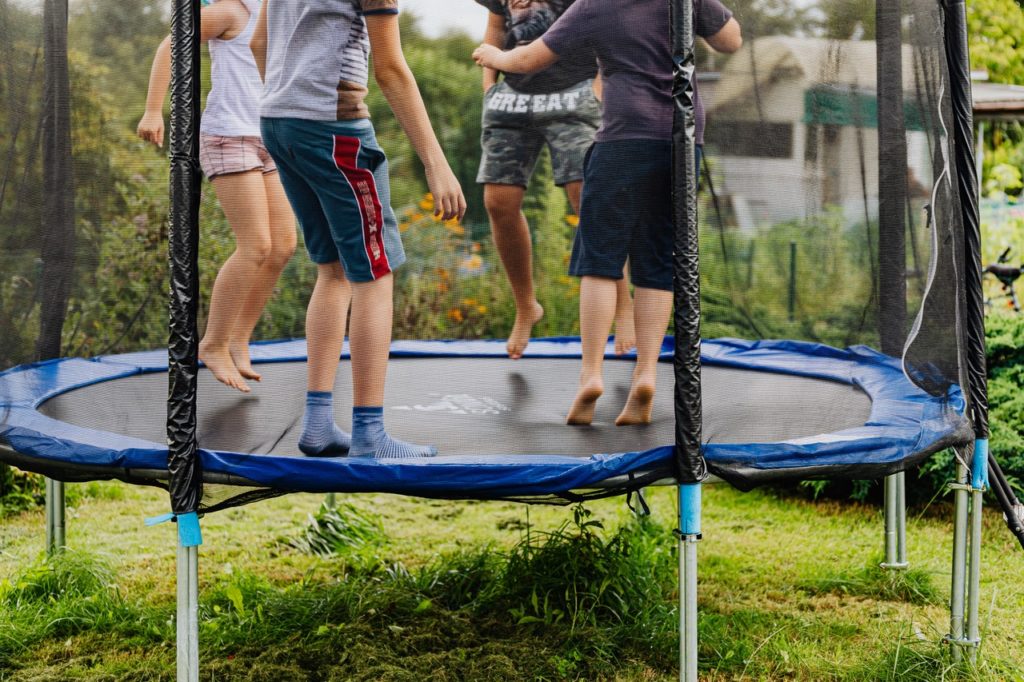
Occupational Therapy for Autism: Families Share 4 Fun Tips & Stories
Occupational therapy exercises don’t have to be relegated to the therapist’s office – you can incorporate at home occupational therapy for autism in many different ways.
Sneaking in fun developmental exercises in everyday play at home, school, or the playground just takes a little creativity and imagination.
We asked our CoordiKids members to share with us their kids’ favourite, most useful, and fun ways to incorporate OT at home, building therapeutic, makeshift occupational therapy for autism exercises into everyday activities.
Here are 3 Fun DIY at-home occupational therapy activities for autism (or sensory processing disorder, dyspraxia, ADHD, or developmental coordination disorder).
*Please note: Autism is the umbrella term for many different symptoms and many different outcomes. This means we need to address the issues of each individual according to their specific and individual needs, within the frame of reference that make sense to the autistic child and not necessarily to us as therapists or parents.
The generalizations made in this discussion are approaching from the standpoint that most of the children diagnosed on the autistic spectrum have mild or often severe problems with sensory processing, and therefore occupational therapy for autism can be incorporated to help develop praxis, sensory motor skills, and emotional regulation.
1. “Lucius Makes Amazing Pancakes”
Stacey has two children, Lucius and Libertie. Both have Autism Spectrum Disorder and ADHD. When Lucius was 8 years old, he discovered a fun and creative way to incorporate learning and motor skills practice: making pancakes!
“He is limited to what he will eat, but he loves pancakes. So, I was using a pancake recipe as a way to work on his school homework: sight words, measuring, and math skills. He was really engaged in the pancake lesson – so much more than just completing the boring homework from the teacher.”
What a great activity to do at home! It serves so many purposes – the most important of all being a delicious meal! Plus, as Stacey pointed out, parents can hide nutrition powders and even fruits and vegetables in the pancakes without compromising their flavour and texture!
On a deeper level, there are fine motor skills being practiced in pouring and scooping to measure. There’s great proprioceptive input from stirring the batter with a big wooden spoon in a large bowl, or quickly whisking for more vigorous activity.
You could even take it a step further by encouraging the child to practice crossing the midline when they scoop the pancake from the pan to the plate sitting nearby the stove.
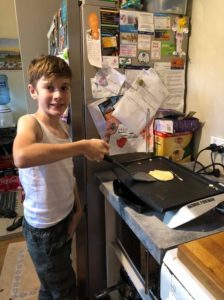
*Please be extra careful in this activity – keep a close eye on your child’s clothing/apron and how close they get to the hot stove!
Almost 4 years later, Lucius still makes pancakes – in fact, he started offering his pancake-making skills for sale to the public! His mom says, “He is quite the little chef now!”
Visit Lucius’ Facebook page to get inspired by his photos and sweet messages! https://www.facebook.com/LuciusMakesAmazingPancakes
On his page, he says,
“l want to be a big business person as l grow up. I want to own loads of pancake shops. The money l make from my amazing pancakes go towards helping me buy the ingredients and lots treats and maybe l might even save some and get my little sister a prize.”
This is a perfect example of how effective strategies and activities are when we follow the interests, needs and skills of each individual person.
Your child might not like pancakes, in that case, you’ll have to find the child’s ‘thing’. This builds self-esteem and enjoyment of tasks.
2. Laundry Time & Clean Up Games
Bonnie owns a home organisation business called Little Home Organised in Brisbane, Australia. So, it’s no surprise to learn that the home activity her autistic son is most proficient with is folding laundry!
“My son folds laundry. It may have taken a long time for him to become any good at it, but we started teaching him around 2 years old. Now, at 5.5 years old, he can pretty much do it alone,” says Bonnie.
Folding laundry is a great way to practice fine motor skills and bilateral integration (and more) at home.
Occupational therapy isn’t the only way to encourage optimal development – using everyday chores can be quite therapeutic in the long run, even if it’s not quite as much fun as playing games with an OT 🙂
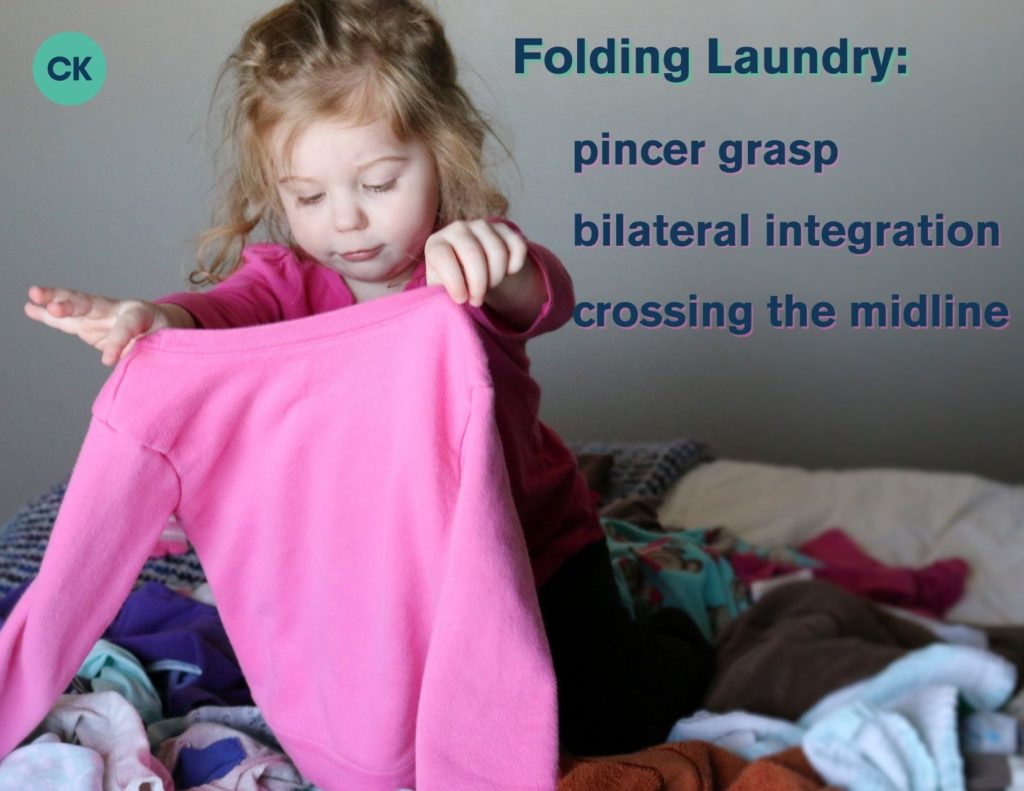
How Folding Laundry Can Incorporate Developmental Exercise:
Fine Motor skills:
- Practice pincer grasp while holding the edges of the clothing upright and laying it in place before folding.
Bilateral integration:
- Using both hands at the same time in a coordinated way.
Crossing the midline:
- Holding two ends of a towel laid on a surface, for example, one must cross from one side to the other to fold it in half.
Hand-eye coordination:
- Especially when working with another family member to fold large sheets and towels!
Proprioceptive input:
- Tugging clothing taut before folding.
Vestibular input:
- Here’s a bonus exercise if you can encourage children to bend at the waist to pick up clothing from the basket on the floor before folding, and again when putting clothing away into drawers!
“It’s also really important to me to teach our children responsibility, because when our kids don’t have that motivation to be responsible, they lose everything. They lose their school hat, their water bottle; they don’t take care of things and think everything is replaceable.”-Bonnie, CoordiKids member
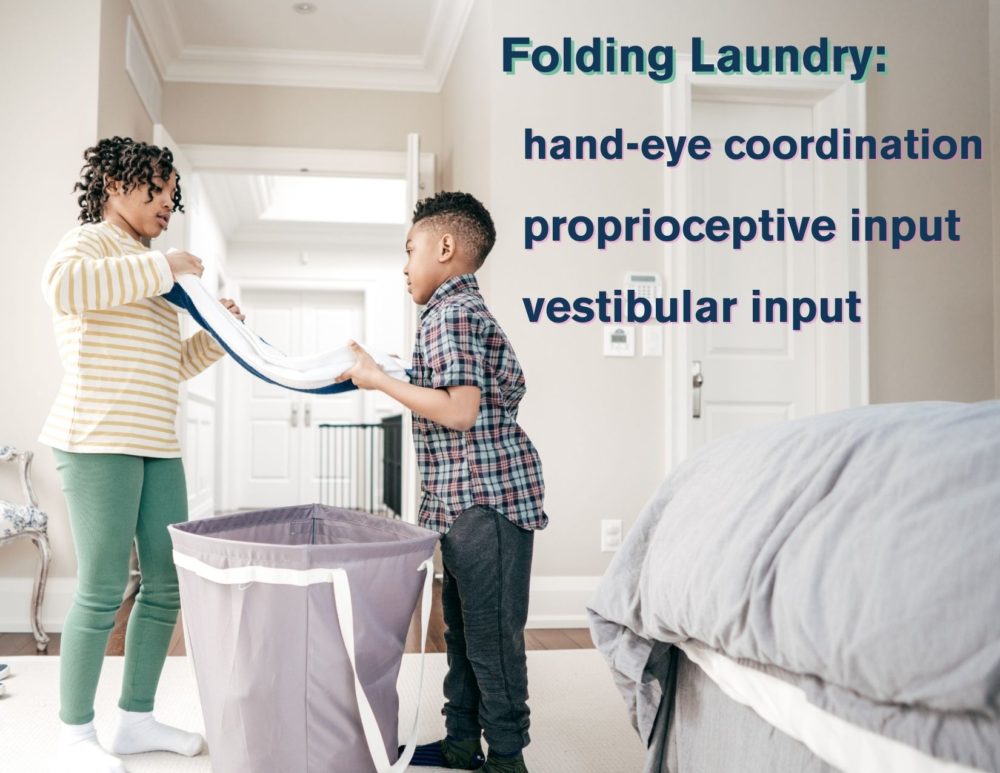
Don’t stop at just the laundry, either! Use Bonnie’s idea to make any clean up time as a game and a way to incorporate DIY at-home occupational therapy for autism, SPD, DCD, dyspraxia, or ADHD.
All children thrive when they contribute positively to create a smooth-running house to live in.
Start off by using household chores as games, compliment success and enjoy a tidy house / laundry with a small celebration, such as a small picnic on your lawn, a movie watched as a family, a special dish for dinner.
Here are some additional tips:
One way to make clean-up easier for children with special needs is instead of vague instructions like,
“Clean your room,” ask children to put away one category of items at a time, such as:
“Please collect all the dirty clothes into the hamper.”
“Please put away all your stuffed animals”
“Please put away your craft supplies.”
But let’s make it fun! Try one of these clean-up games to incorporate therapeutic movements:
Game #1:
Use two laundry baskets to have a race to see who can collect all of the items in their category first. Bending at the waist to pick up items from the floor will give great vestibular input, and focusing on small toys will work those pincer grasps!
Game #2:
Challenge your little one to pick up each item from a category with both hands at the same time – working on that bilateral integration.
Game #3:
Station your child at the basket in the middle of the room while you move around him/her in a circle picking up items and tossing them gently to them. They must catch the item with both hands and drop them into the basket. (Bilateral integration + hand-eye coordination)
Game #4:
Do you use large bins or baskets full of toys? Using plain-coloured bins full of toys of a certain category makes it easier for children with autism to focus while they’re in their room. Too many colours and shapes and toys lying around make sit difficult for highly sensitive visual children to focus on one task at a time.
Plus, you can put those bins to work on some “heavy work” activities (proprioceptive input). Have your child take one bin off the shelf at a time, fill it up, and replace it on a shelf or on the bed.
Want more organisation and cleaning tips?
Bonnie is a CoordiKids member who specialises in home organisation – follow her company’s podcast, Little Home Organised, for great tips on home organisation, including episodes specifically for children with ADHD and ASD.
3. Trampoline Time Every Day!
“Anyone I know who has children with sensory needs of any kind has a trampoline of their own – or they are close friends with someone nearby who lets them use it regularly!”
Trampolines are so much fun, and they provide fantastic proprioceptive and vestibular input for jumping children. Not to mention, burning off extra energy is always a good idea!
4. CoordiKids Home Course
CoordiKids Home Course is an easy and fun way to get 15 minutes of at home occupational therapy style exercises every day right from the comfort of home, on the playground, or anywhere you can use a mobile device connected to the internet.
The CoordiKids videos feature actors playing silly games and making exercises fun for children to follow along with. Even parents, grandparents, classmates and friends can join in.
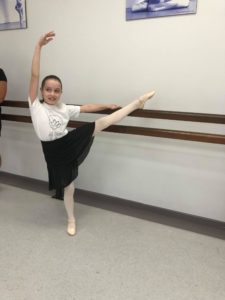
“This photo was taken at a photo shoot yesterday for my daughter Libertie’s dance class. This wouldn’t have happened without having had done our CoordiKids before going – it was a 4-hour photo shoot with dance class in between. She needed the break and therapeutic movement to get through it all.”
CoordiKids was developed to make it easy for parents to follow exercises and activities to ensure that their child’s sensory motor skills are well developed.
It is not *true* occupational therapy for autism, but instead are video recorded developmental exercise courses that are simple to follow, move gradually from one level to the next in order to provide positive feedback to the child and provide an opportunity for the child to experience success.
The autistic child finds it easy to follow the video recordings and many can comprehend some, if not all, of the words written in the introduction.
The program is used in the safe environment of the home without competition or comparison with the skills of others. The autistic child has the opportunity to observe an exercise or activity over and over until the child feels safe to attempt it.
It depends on the individual needs and progress of each child, but it can be used with a close sibling or with the rest of the family. This can encourage social skills, turn taking and the feeling of “I can do activities with my family!” which the child is often deprived of.
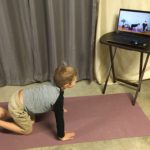
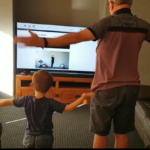
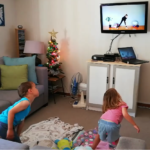
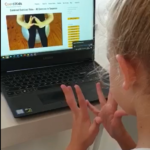
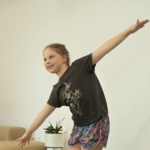
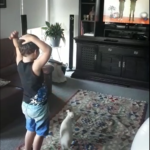
Pingback: Occupational Therapy at Home
Pingback: Exploring the Need for Occupational Therapy in Children
Pingback: Occupational Therapists – Create Personalized Treatment Plans – Online Influence
Pingback: Occupational Therapy Can Help Children with Autism Improve Daily Life Skills – Helpful & Informative Blogs